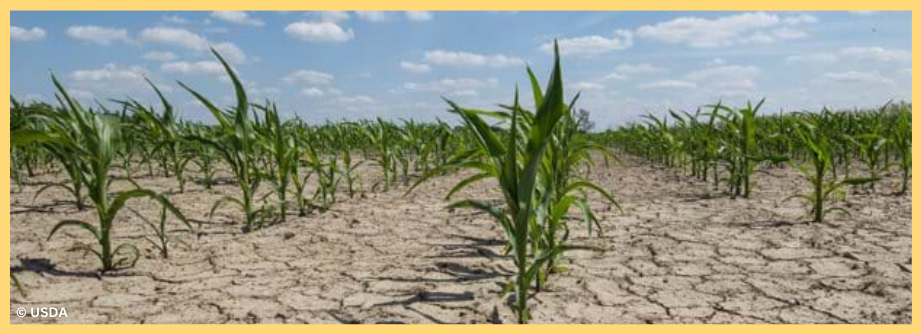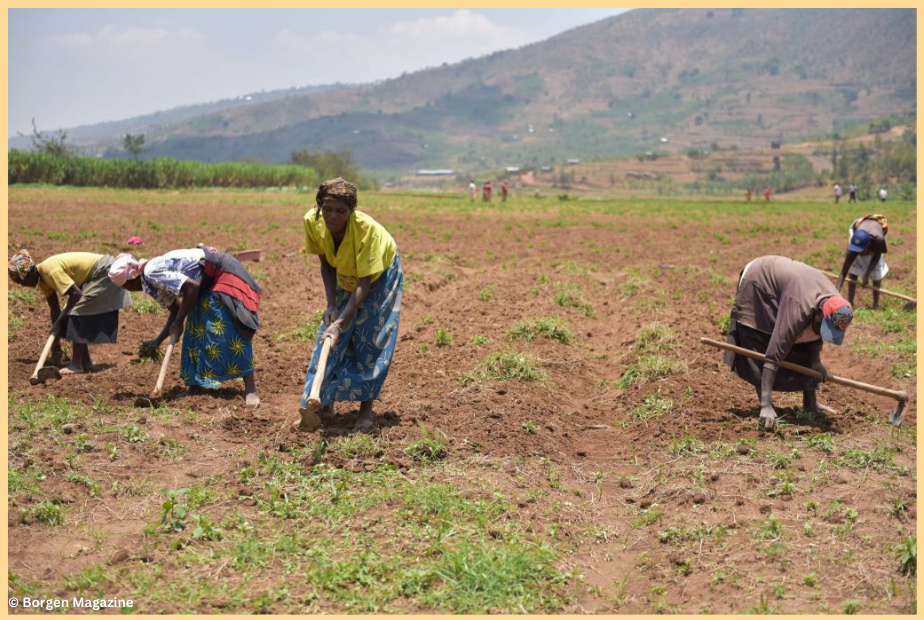Smallholder farmers are essential actors in building climate change resilience. Adopting sustainable farming practices helps them adapt to climate challenges and contributes to global mitigation efforts by sequestering carbon and reducing emissions as a natural climate solution.
Unfortunately, although smallholder farmers contribute to over one-third of the world’s food supply (and sustain between 4.5 to 5.5 billion people globally), their productive capacity is severely impacted by climate change.1 Shifting rainfall patterns and climate-related disasters such as droughts, floods, wildfires, and storms cause major damage to their crops and lead to significant economic losses.2,3 Between 2003 and 2013, 89% of crop and livestock production losses (accounting for USD 12.816 million) were caused by drought in Sub-Saharan Africa.4
As farmers rely on natural resources (rain and water, healthy soil, etc) to secure their productive capacity, involving them in climate-smart farming is not only beneficial but necessary! With farmers at the forefront of ensuring global food security, a climate change strategy that does not target smallholder farmers’ resilience is ineffective and incomplete.5
However, at the Africa Climate Summit 2023 (#acs23) in Nairobi in early September (we had a hiveonline representative attend!), there seemed to be a stronger focus on carbon offsets and the carbon market and less on smallholder farmers. This Summit resulted in governments, private sectors, multilaterals, banks, philanthropists, and other diverse organisations committing nearly USD 26 billion to advance the global Net Zero emissions targets and align with international climate finance and adaptation objectives.
Out of about 100 commitments, only 4 explicitly mentioned and targeted “farmers” in their commitment, while only about 11 mentioned projects within the agricultural sector. For instance, one such commitment was the U.S. Department of Agriculture’s $17 million to aid smallholder farmers transitioning to climate-smart agriculture. 6
So what could this mean? Why was there a gap in commitments directly involving African smallholder farmers? Could some of the commitments not specifically highlighting farmers still encompass them as beneficiaries in the background? Given the Summit’s focus on carbon markets, this gap may also be linked to the complexities of involving farmers in voluntary carbon credits through carbon farming.7 ⋙

Working with over 18,000 farmers across Mozambique, Kenya, and Ghana has helped us at hiveonline understand first-hand the struggles that farmers are experiencing due to climate change. The narrative we hear remains the same across the countries we work in: farmers lack the resources (starting capital, quality inputs, technical capacity, etc.) to secure their crops and improve their livelihoods, especially in the face of climate risks.
In Njoro, Nakuru (Kenya), farmers on our platform report significant changes in rain patterns, making it hard to predict the rain and putting their harvest at risk. Consequently, farmers are now considering switching to short-term crops that mature within three months to adapt to climate challenges. Furthermore, one of hiveonline’s field officers reports that the cost of planting one acre of maize or beans is about USD 250-300 per acre, leading farmers to land-share to afford to grow crops (these costs include ploughing costs, labour and inputs costs; moreover the whole process from planting to harvest).
Now, if these farmers were to switch to climate-smart agriculture, they would need additional capital to purchase the specialised tools, technology, and climate-smart specific inputs (e.g. drought-resistant crops, climate-smart irrigation set-up, etc.).
This is why at hiveonline, we firmly believe that providing farmers with access to finances should be the main priority if we are to help them tap into their full potential and step into their role in the fight against climate change.
To do this, we connect farmers located in remote and last-mile areas to financial institutions through our platforms for the opportunity to acquire the starting capital they need. We do this by searching for funding and partnerships that will help to support our mission; if hiveonline or our partner financial institutions, for instance, were to receive part of the USD 26 billion pledged during the Summit, we would ensure that these funds are invested into our farmers and improving our platforms’ services which are specifically designed and dedicated to helping farmers. ⋙

Furthermore, as an impact startup working toward financial inclusion, hiveonline is putting trade linkages and market access opportunities in place for farmers to find buyers to sell their crops and increase their revenue via our platforms. Lastly, small-scale farmers often lack access to reliable agricultural information and struggle to find evidence-based climate adaptation solutions; 8 we provide our farmers with access to climate-smart educational content from Mercy Corps Sprout via our platforms.
In conclusion, at hiveonline, we are convinced that smallholder farmers and micro-entrepreneurs are key to mitigating climate change challenges and enhancing food security if they have the necessary resources. As over 60% of the African population are smallholder farmers, equipping them with the proper knowledge, resources, and, most importantly, capital could tremendously impact the fight against climate change. We need to do better about supporting smallholder farmers to empower them in their journey of Farming for [our collective] Resilience! ∎
Would you like to learn more about our solutions or to partner with us? Get in touch with us at sales@hivenetwork.online.
Sources:
- Here’s why small-scale farmers need more climate funding. (2022, November 4). World Economic Forum. Retrieved October 9, 2023, from https://www.weforum.org/agenda/2022/11/the-vital-role-of-small-scale-farmers-climate-change/
- McKinsey Global Institute. (2020, May 18). How will African farmers adjust to changing patterns of precipitation? Retrieved October 9, 2023, from http://ceros.mckinsey.com/climate-change-promo-desktop
- Food and Agriculture Organization of the United Nations (n.d.). Damages and losses. www.Fao.Org. https://www.fao.org/resources/digital-reports/disasters-in-agriculture/en/ or https://doi.org/10.4060/cb3673en
- Food and Agriculture Organization of the United Nations. (2016). Damage and losses from climate-related disasters in agricultural sectors. I6486EN/1/11.16. https://www.fao.org/3/i6486e/i6486e.pdf
- To tackle climate change, we need to invest in smallholder farmers. (n.d.). IFAD. Retrieved October 9, 2023 https://www.ifad.org/es/web/latest/-/blog/to-tackle-climate-change-we-need-to-invest-in-smallholder-farmers
- African Development Bank. (2023). An overview of agreed commitments and announcements from the Africa Climate Summit, Nairobi, September 4-6, 2023. African Development Bank Group. Retrieved October 9, 2023, from https://www.afdb.org/sites/default/files/documents/africa_climate_summit_commitments_and_announcement_compilation_final_sept_7_2023.docx.pdf#
- Schilling, F., Baumüller, H., Ecuru, J., & von Braun, J. (2023). Carbon farming in Africa: Opportunities and challenges for engaging smallholder farmers. Center for Development Research- University of Bonn. https://www.zef.de/fileadmin/webfiles/downloads/zef_wp/ZEF_Working_Paper_221.pdf
- How Can We Help Smallholders Build Resilience to Climate Change? | Agrilinks. (2023, May 9). Retrieved October 9, 2023, from https://agrilinks.org/post/how-can-we-help-smallholders-build-resilience-climate-change
